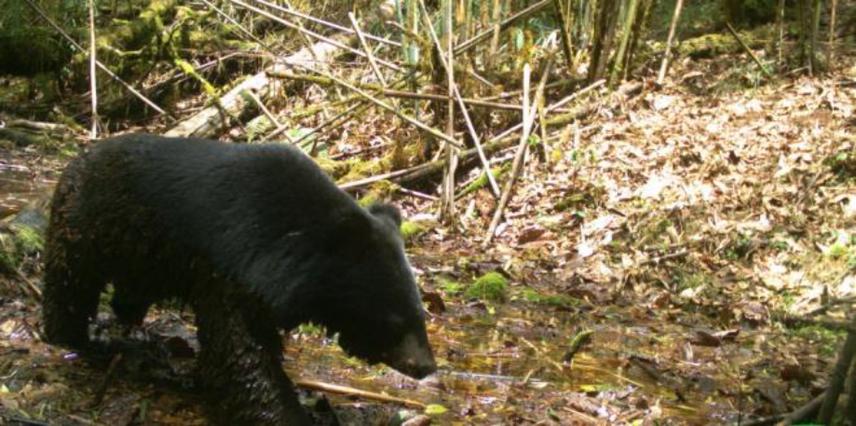Sangay Wangmo
The main aim of this study is to investigate the habitat and human bear conflict in Phobjikha RAMSER site, and come up with appropriate recommendations to address the problem.

Himalayan Black bear capture in camera trap.
Globally, the Himalayan black bear faces survival threats from poaching, habitat loss, habitat degradation, retaliatory killing and increased pressure from other anthropogenic activities (Servheen 1990, Garshelis etal. 1999 and Kemf et al. 1999). All these human-bear conflicts are very much common in Bhutan and in study site but no systematic studies are done to date to better understand the problem. As such, this is a paucity of information on the status, distribution, and the extent of the human- bear conflict in the country.
With increase in socio-economic development activities taking place in the country, such as road construction, urbanization and deforestation cause huge habitat loss leading to increased human wildlife conflict. As such, there is a high risk of killing wild animals in retaliation. Furthermore, the human-wildlife conflict poses a threat to people’s livelihood in the rural communities. Human bear conflict is a growing concern and incidences of conflict are reported from many parts of the country. Hence it is crucial to understand the root causes of human-bear in order to address the problem.
Because of limited studies, there is a huge gap in data and knowledge on human- bear conflict in the project site. In absence of such information, it has always been a challenge for the concerned authority to respond to the human-bear conflict more efficiently and effectively. As such, in depth studies on human-bear conflict are critical in the country and in study site to better understand the problem in its entirety and then accordingly put appropriate measures in place to address the problem.
The study area will be surveyed for the presence or absence of the Himalayan black bear through sign survey such as scats, tracks, trails, scratch marks and information from the local community (Nishith 2009).The history of bear-human encounter will be recorded with the types and kind of habitat, the activity of humans and bears at the time of encounters, number of bears and people involved, the kind of injuries, and the circumstances that led to the encounters. The communities will be interviewed via random sampling.